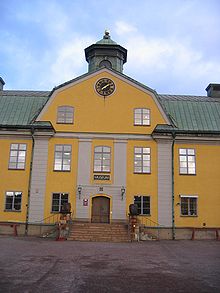Archaeology comes alive at Great Copper Mountain in Falun Sweden
Archaeological and geological studies indicate, with considerable uncertainty, that mining operations started sometime around the year 1000. The mine was definitely operating by 1080, but no significant activities had begun before 850. Objects from the 10th century have been found containing copper from the mine. In the beginning, operations were of a small scale, with local farmers gathering ore, smelting it, and using the metal for household needs.
The name Falu Koppargruva-Falu Copper Mine- is mentioned in a written source from 1288 and states that “in exchange for an estate, the Bishop of Västerås acquired a 12.5% interest in the mine.”
In 1347 Stora Kopparberg
By the 17th century, Great Copper Mountain constituted a third of the world’s copper resources, providing the Swedish crown with an enormous amount of wealth. At the same time, the Swedish Empire
The Pit at At Great Copper Mountain
Around 1687, exploration of Great Copper Mountain caused a huge cave-in on Midsummer’s Day. Luckily, miners had that day off, one of the few actually. Remnants on the cave-in still exist in the form of a pit that dominates the site.
Every site has a legend of someone that disappeared into a cave after an exhibition and were never seen again. This was the case of the Matts Israelsson who disappeared at Great Copper Mountain a day before his wedding in 1677. His body was discovered in 1717 completely preserved in the vitriol rich air. Israelsson’s body oddly found its way to the town square where it was displayed for identification. An old lady soon passed by and cried out “It’s him! My fiancé!”
Copper extraction peaked in 1650 and continued until 1992 when the mine was closed. The Great Copper Mountain supplies residue for production of Falu red paint, the paint that’s characteristic of the wooden houses found in Sweden.
In 2001 the archaeological site of Great Copper Mountain was selected as a UNESCO World Heritage site. In addition to the mine itself, the world heritage area also covers the town of Falun, including 17th century miners’ cottages residential areas and Bergsmansbygden, a wider area which the free miners settled and often built estates mirroring their wealth.











